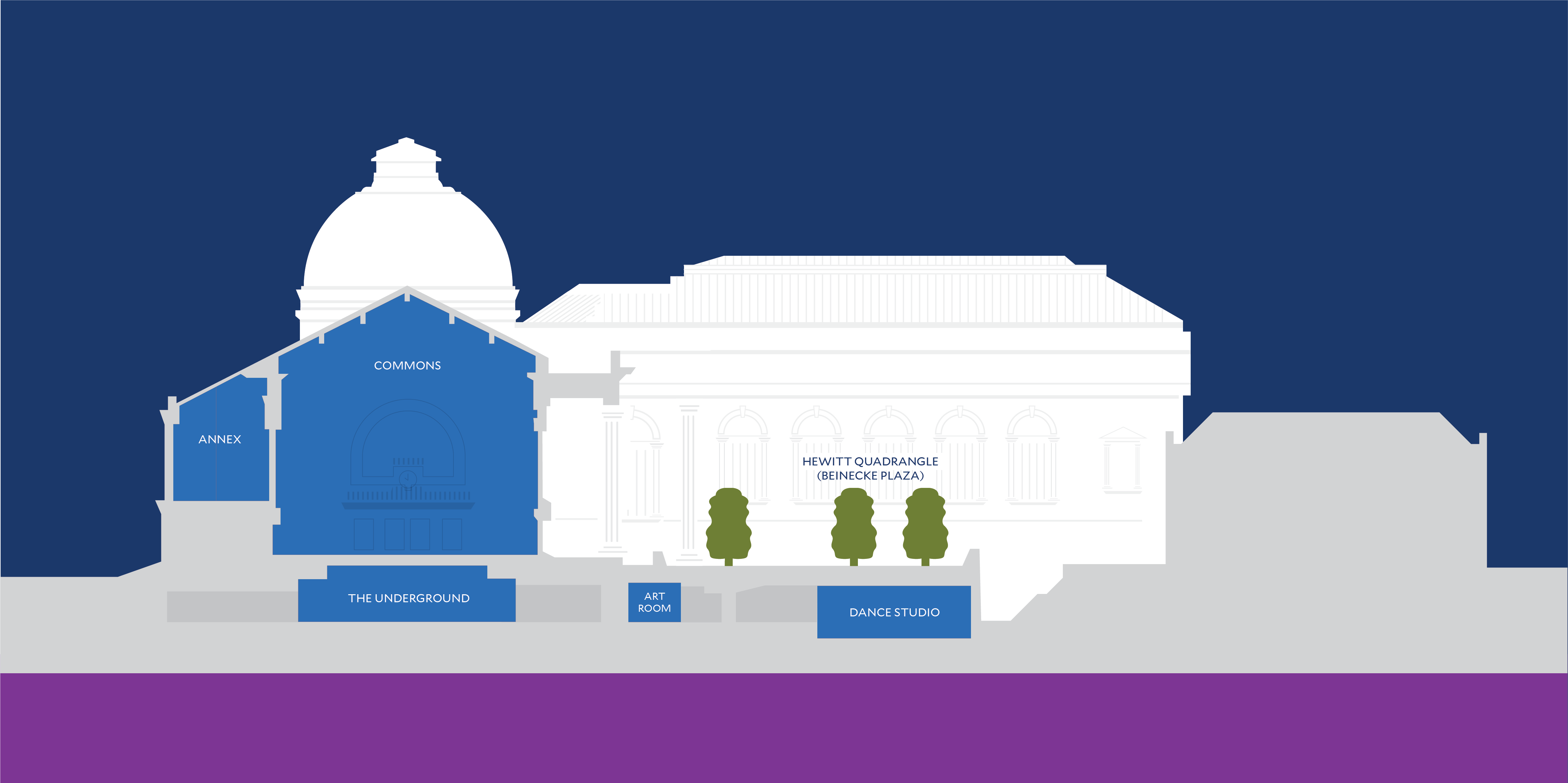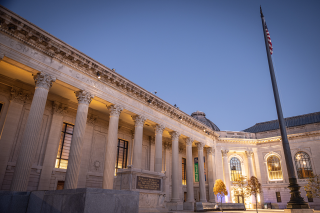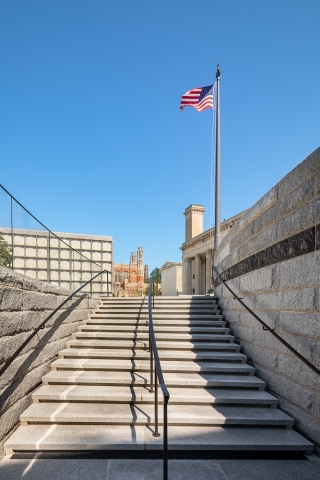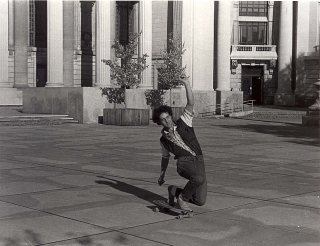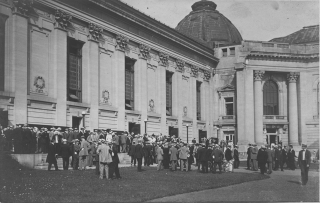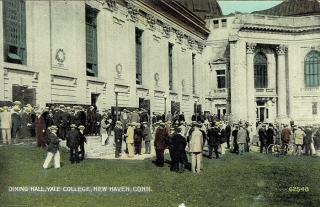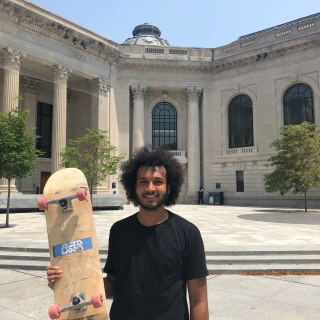Face the Memorial Rotunda.
Now make a 360-degree turn and name the landmarks all around you: Woolsey Hall, Woodbridge Hall, Beinecke Rare Book & Manuscript Library, World War I Cenotaph, Commons, and back to the Memorial Rotunda.
Now look down.
Hewitt University Quadrangle, the space that knits these landmarks together, is Yale University’s main plaza. Originally named University Court in 1917 and colloquially referred to as Beinecke Plaza (which is actually the name of the plaza around the Beinecke Library), Hewitt Quadrangle has caused many a jaw-drop as guests passing from the street side through the Rotunda have experienced the space for the first time. Time itself is rendered powerless on the Quadrangle: the Beaux-Arts neoclassical colonnade of Commons meets the Modernist Vermont marble façade of the Beinecke. A quasi-extension of the Memorial Rotunda just in front of the colonnade reminds passersby of Yale alums who served in World War I.
Hewitt Quadrangle has a long history of student gatherings. Because of its openness, centrality, and high visibility, it has been the site of protests throughout the years. Major protests included protests against the Vietnam War in 1969, against apartheid in the 80s, against sweatshops in the 00s, in support of graduate student union Local 33–UNITE HERE in 2017, and as part of the national Women’s March series in 2017. The anti-apartheid and Local 33 protests were similar in that both movements erected temporary structures on the plaza. In 1986, protestors put up a living structure dubbed “Winnie Mandela City” after Yale reversed its initial order of removal. The so-called shantytown only came down because an alum set the structure ablaze during a class reunion in 1988.
Hewitt Quadrangle is not always so tense. The plaza has also been used for public art installations that have brought the community together. During the protests against the Vietnam War in 1969, Claes Oldenburg, in collaboration with architecture students, revealed the 24-foot-high sculpture Lipstick (Ascending) on Caterpillar Tracks at his alma mater. As playful as it was incisive, the sculpture was used as a stage for speakers. Due to its popularity, it was remade into a metal form and moved to Morse College, where it resides today. Another playful sculpture is Alexander Calder’s Gallows and Lollipops. The red triangular base is adorned with thin metal rod-wires featuring red, blue, yellow, and white petal-like sculptures at the end. A kinetic piece, it calls to mind hanging mobiles for babies, and its agile structure stands in stark contrast to the heavy buildings surrounding it. During the YSC renovation, Gallows was moved to the Yale University Art Gallery, where conservators cleaned and restored it. Still visible is Isamu Noguchi’s 1963 The Garden (Pyramid, Sun, and Cube), a sunken piece adjacent to the Beinecke’s subterranean reading room. Made of the same Vermont marble as the library, the smooth, still sculpture invites viewers to meditate as if they were in a Zen Garden.
Other joyful gatherings on the Quadrangle included the Extracurricular Bazaar for undergraduate students, where first-years, primarily, would sign up for as many extracurriculars as their schedules allowed (and often, more than it allowed). As the University grew, this event moved to the Lanman Center nearby. In April 2015, community members gathered to see “Lux: Ideas Through Light”, an artistic collaboration that combined light and projection technologies to display new ideas and discoveries generated through university research using the Beinecke as backdrop. After hours on the plaza, you can find students meeting before heading out for the night, musicians playing music into the evening, or skateboarders or rollerbladers gliding across the grippy stone floor.
Move around Hewitt Quadrangle. Feel the history. Forget time.

